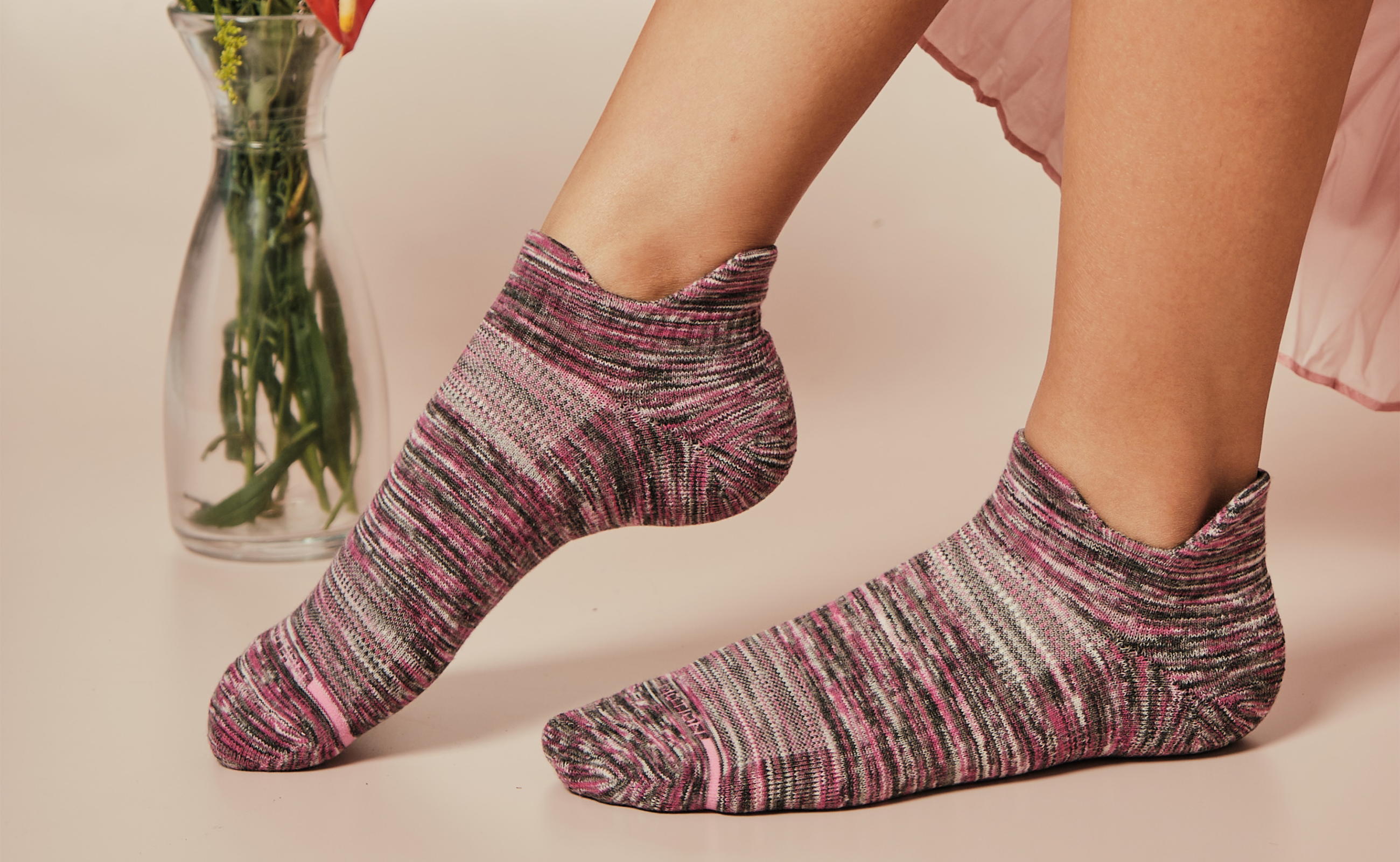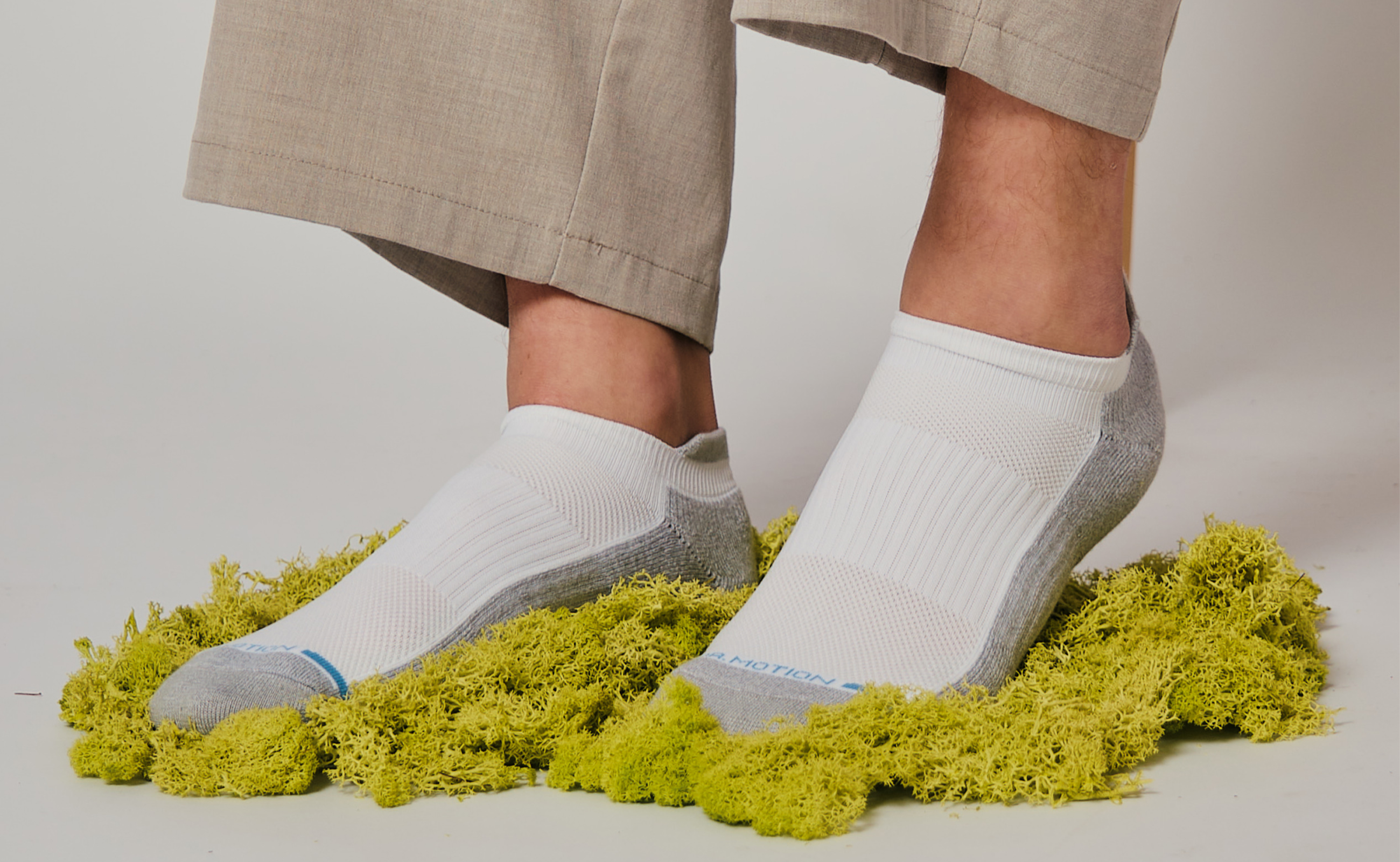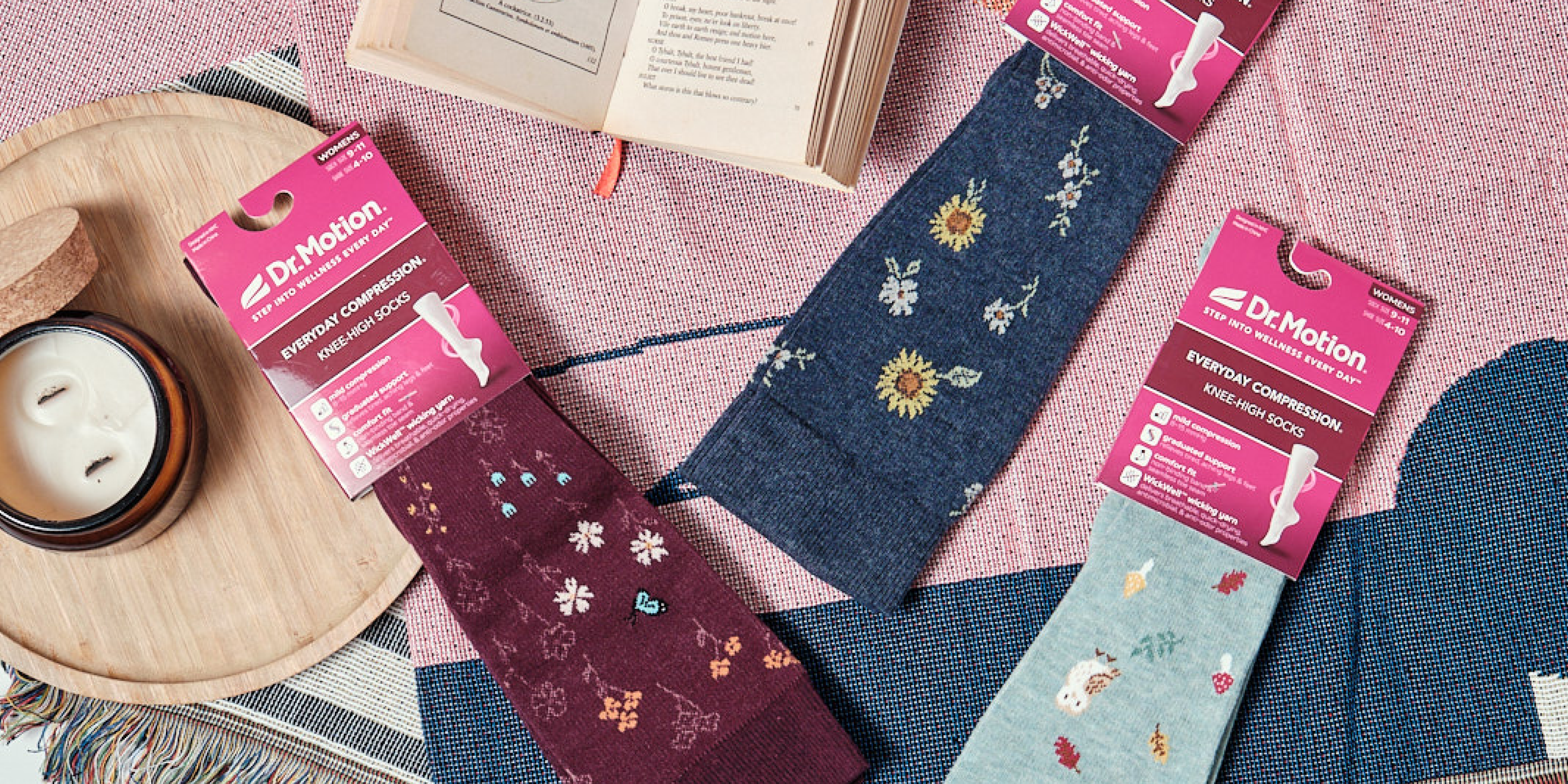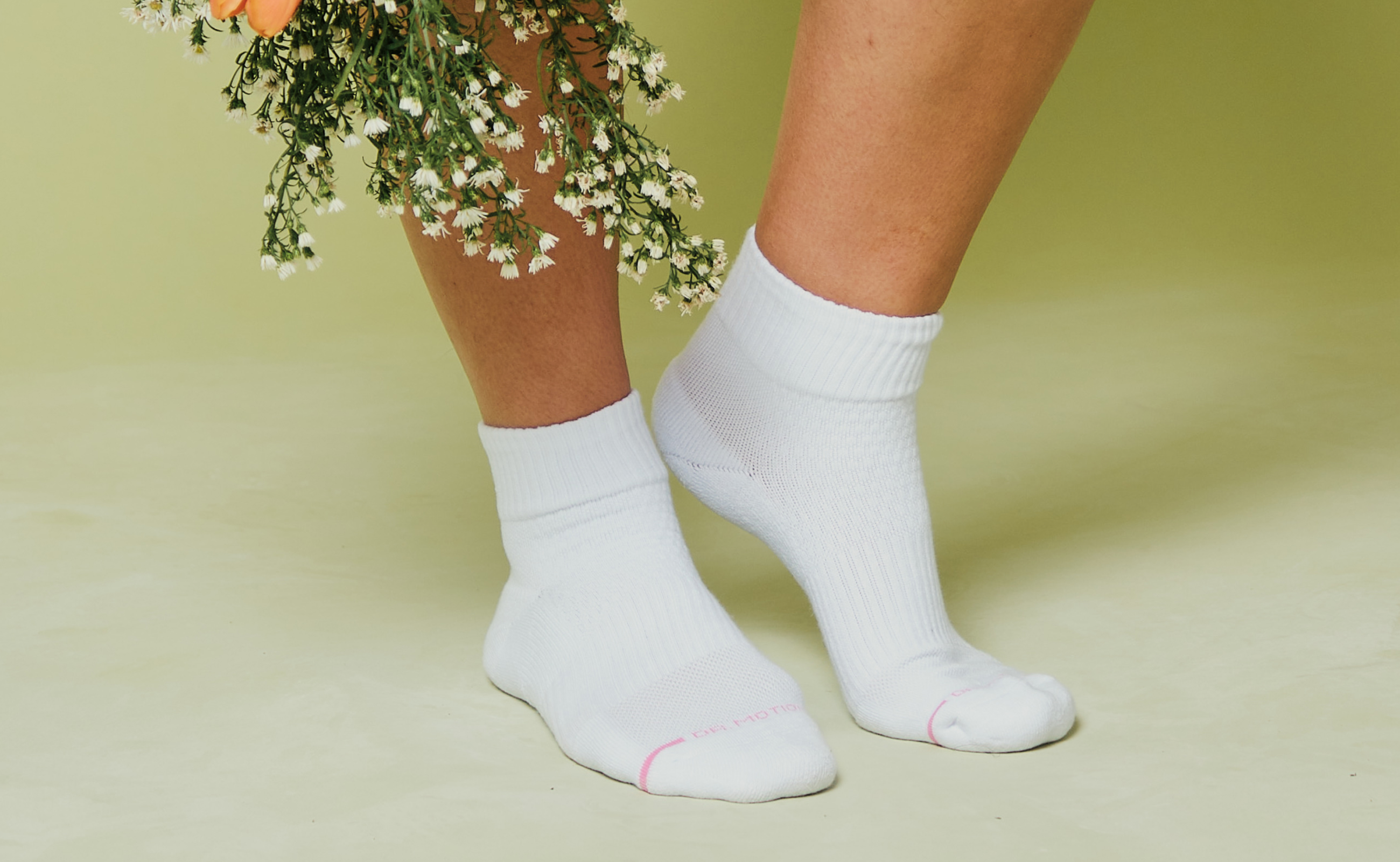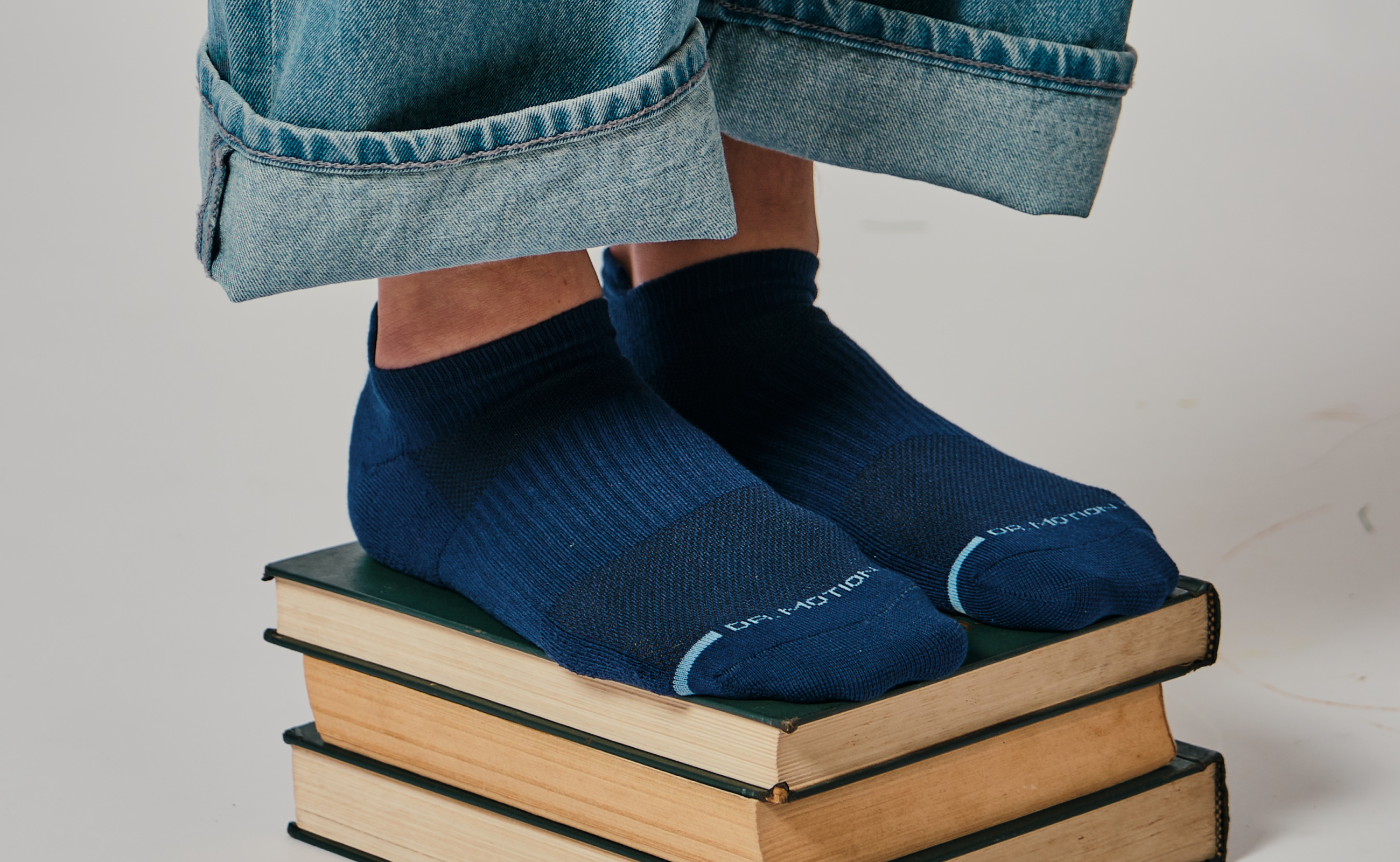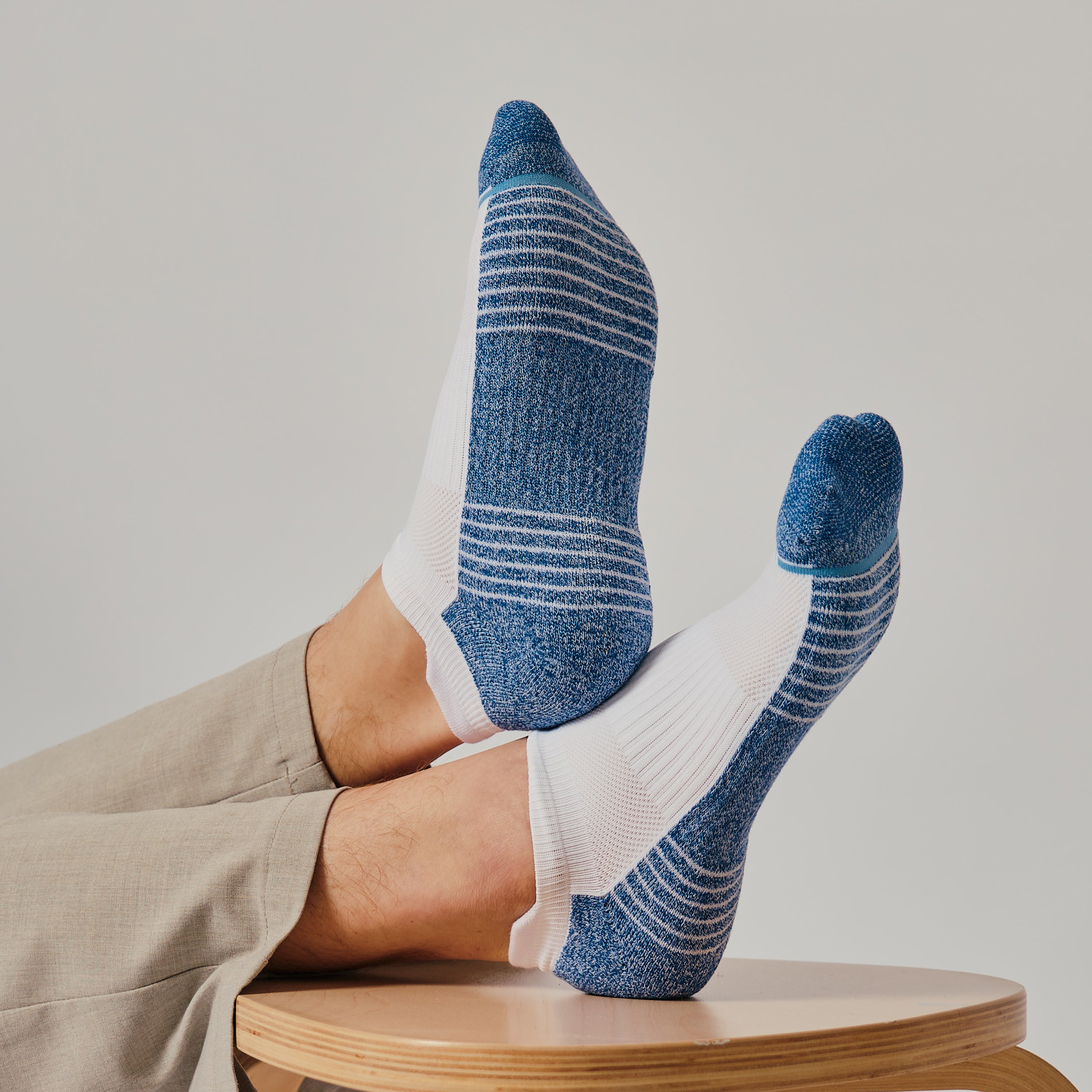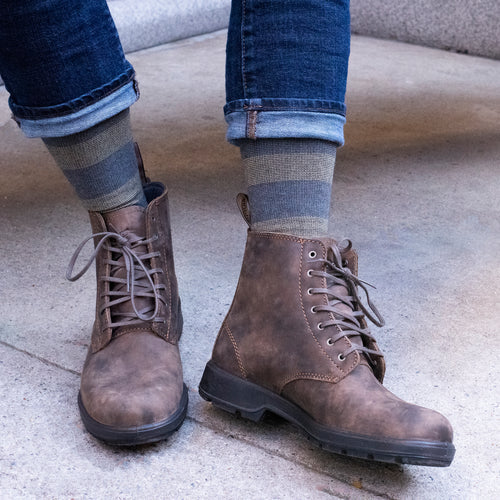Debunked Myths About Compression Socks
Most people associate compression socks with old age. Others believe their only benefit is a part of medical treatment for circulation ailments that affect people diagnosed with heart failure. While this is true, it is hardly the only benefit of compression socks. In addition to compression socks being appropriate for a wide range of health issues, they also have major benefits for people of all ages. Additionally, today's compression stockings are not the unattractive hosiery available only in nude, black, or white colors. There are now colorful compression socks, styled in a variety of fun patterns and designs to fit the active lifestyles of the young and old.
Read on to discover the many benefits of wearing compression socks and the myths that have been debunked.
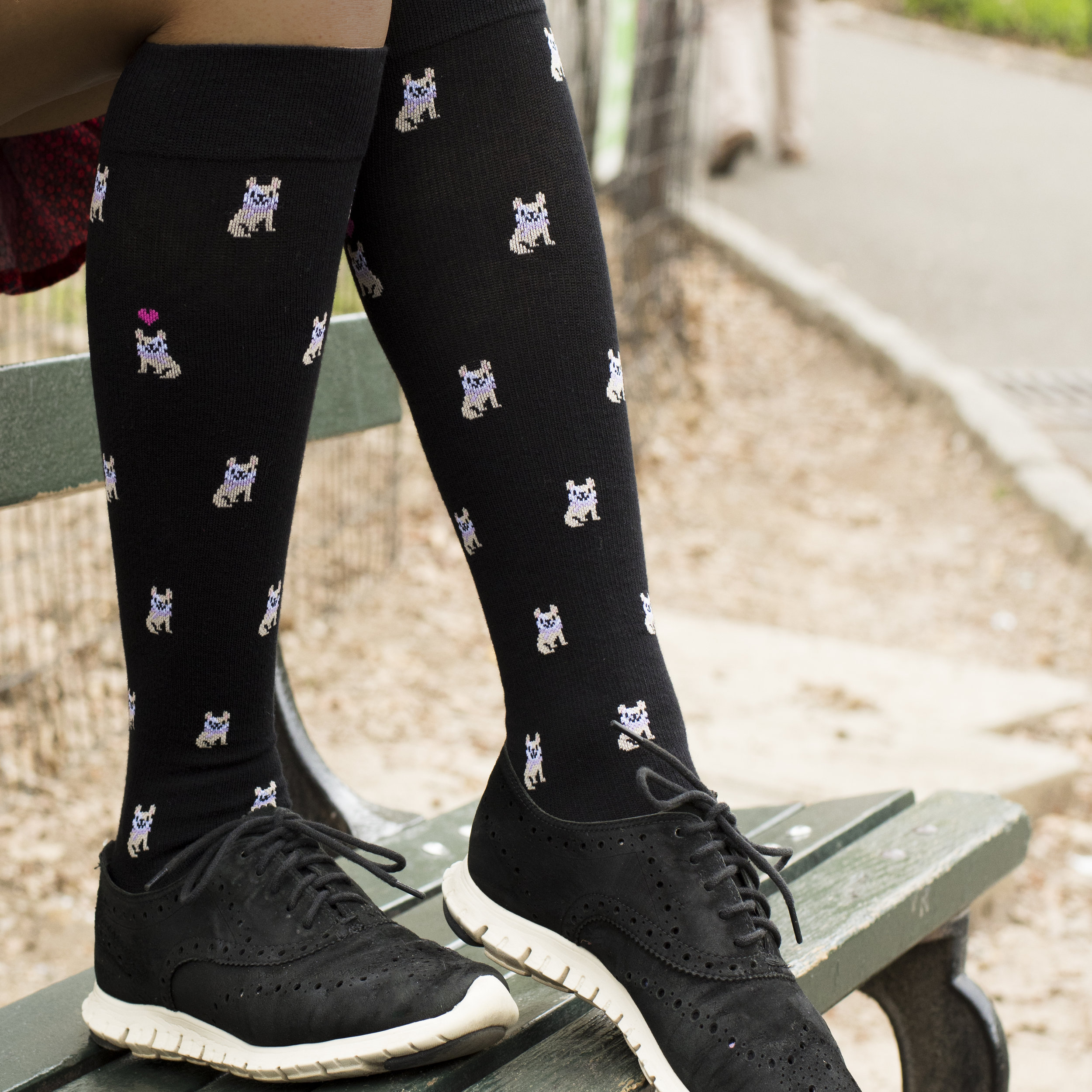
MYTH 1 - COMPRESSION SOCKS CUT OFF CIRCULATION
One of the first things you may ask is: Can Wearing Compression Socks be Harmful? The short answer is no! If your compression socks are painful or cut off circulation, then they are not the right fit or are being worn improperly. You should always choose compression socks that fit your calf size and length. Most manufacturers produce multiple sizes to fit any lower leg thickness. There is also a proper way to wear these socks. The tops of compression socks should not be rolled down or folded over. They should be put on smoothly and fit snugly, just below or above the knee.
Wearing compression socks correctly can prevent tired or achy legs and will increase circulation during long periods of inactivity, such as:
-
Persons that are bedridden
-
During long flights or road trips
-
After surgery to prevent leg blood clots
MYTH 2 - THEY'RE ONLY FOR OLD PEOPLE
This is certainly an old myth that needs to be corrected. Compression socks work to provide oxygen-rich blood to the leg by applying pressure to blood vessels. This boost of pressure increases the flow of blood through the veins and back to the heart - keeping your blood moving as it should. For the elderly with poor circulation, compression socks are certainly beneficial. But they also benefit many others who are experiencing temporary circulation problems:
-
Pregnant women to reduce blood clotting
-
Employees who must stand long hours
MYTH 3 - THEY CURE VARICOSE VEINS AND LEG ULCERS
While wearing compression stockings does not cure these medical conditions of the leg, they certainly provide many benefits for those who suffer from varicose veins or leg ulcers. But what you can expect is a reduction in the swelling, aching, and leg discomfort associated with these medical conditions. Due to the improved blood circulation to the legs when you wear these socks, many people experience legs that look healthier and feel more energetic.
Any health or leg condition that is made worse by limited blood circulation will benefit from the gentle pressure and increased blood flow provided by compression socks:
-
Edema or swelling due to water
-
Deep Vein Thrombosis (DVT)
-
Heart Failure
-
Hormone Replacement Therapy
-
Blood clotting disorders
-
Skin infection on feet or legs
MYTH 4 - THEY ARE SO UNATTRACTIVE
Today's compression socks are available in business dress or casual comfort styles and colors. No matter what your age, or where you are traveling, you will find attractive compression socks that are perfect for the event or your personality. Some may choose more colorful or fun styles that suit their personality while others may desire the right color socks to wear to the office and entertainment.
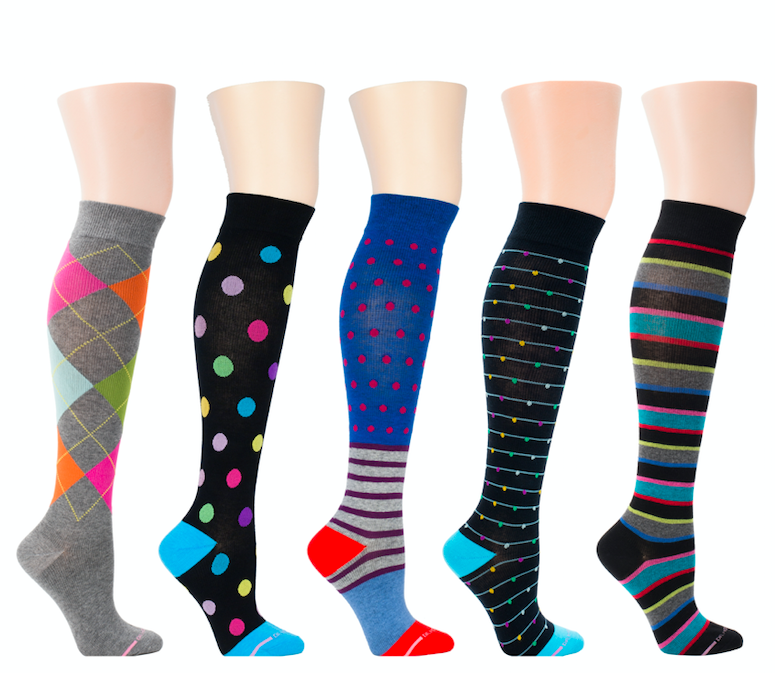
Muted or bright colors, subtle patterns or bold graphics - there is a compression sock to fit your style and your needs.
MYTH 5 - YOU WILL EXPERIENCE MANY SIDE EFFECTS
If you are wondering about the side effects of wearing compression socks, there are many myths such as they will totally cut off your circulation and cause more problems. This is only partly true, because compression socks must be worn properly or they will cause leg discomfort and reduced blood flow. One sure sign that your socks are too tight is if your legs or feet become numb or start tingling. In fact, when worn properly, one of the major compression sock benefits is their ability to help with swelling after an accident or sports injury, helping you to recover quicker.
TAKE-AWAYS
-
Avoid wearing compression socks that are too tight
-
These socks improve blood circulation in the legs
-
They are often prescribed for CHF
-
Wear these socks during a long flight or car trip
-
Most well-known negative side effects of wearing compression stockings are exaggerated or untrue
-
They are the right socks for poor circulation improvement
GET THE BEST COMPRESSION SOCKS TODAY
Visit us online at Dr. Motion to view our wide selection of graduated compression socks for circulation improvement and reduced leg swelling and pain. Our socks are more comfortable and fit better - so you can wear them longer. Dr. Motion quality compression socks are available through major retail and online at Amazon.
Disclaimer: This article provides information solely for educational purposes, including but not limited to text, graphics, images, and other materials contained herein. This article is not intended to substitute for professional medical advice, diagnosis, or treatment. Always seek the advice of your physician or another qualified healthcare provider with any questions you may have regarding a medical condition.


